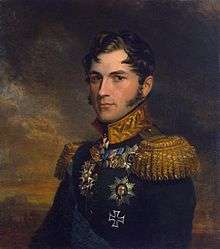Line of succession to the Belgian throne

There are fifteen persons in the line of succession to the Belgian throne.
The King is considered to have acceeded to the throne upon his taking of the oath as required by article 91 of the constitution.
Eligibility
Since 1991, Belgium practises absolute primogeniture among the descendants of King Albert II (then Prince of Liège). Descendants of earlier monarchs and princes are only eligible to succeed if male and descended from King Leopold I in male-line (i.e. according to agnatic primogeniture), meaning that descendants of all Belgian princesses not descended from Albert II are barred from the throne. There are no living princes of Belgium who are not descended from Albert II, so agnatic primogeniture de facto doesn't apply to anyone anymore and the right to succeed is effectively limited to Albert II's descendants.[1]
A person is deprived of his or her rights to the crown if he or she marries without the consent of the king (or the consent of those exercising the king's powers). The lost right may be re-established by the king (or by those exercising the king's powers) in the event of parliamentary agreement. Should there be no eligible descendant of King Leopold I, the reigning monarch may name his or her heir presumptive with the approval of the Parliament, but if she or he doesn't name the heir presumptive, the throne would eventually become vacant.[2]
When King Albert II's daughter Astrid married Archduke Lorenz of Austria-Este in 1984, agnatic primogeniture being in effect, she had no succession rights and therefore did not seek the consent to her marriage. Following the introduction of absolute primogeniture among her father's descendants in 1991, it was deemed that she had obtained the necessary consent and thus assumed her place in the line along with her children.[2]
Reported renunciation of Prince Amedeo
When Prince Amedeo married in 2014, it was reported that he did not ask his uncle King Philippe's permission,[3] and had therefore lost his right to the Belgian throne. However, on November 12, 2015, a Royal Decree was published which showed that consent had been given after the marriage retroactively.[4]
List of succession
 King Albert II (born 1934)
King Albert II (born 1934)
 King Philippe (b. 1960)
King Philippe (b. 1960)
- (1) Princess Elisabeth, Duchess of Brabant (b. 2001)[1]
- (2) Prince Gabriel (b. 2003)[1]
- (3) Prince Emmanuel (b. 2005)[1]
- (4) Princess Eléonore (b. 2008)[1]
- (5) Princess Astrid, Archduchess of Austria-Este (b. 1962)[1]
- (6) Prince Amedeo, Archduke of Austria-Este (b. 1986)[1]
- (7) Archduchess Anna Astrid of Austria-Este (b. 2016)
- (8) Princess Maria Laura, Archduchess of Austria-Este (b. 1988)[1]
- (9) Prince Joachim, Archduke of Austria-Este (b. 1991)[1]
- (10) Princess Luisa Maria, Archduchess of Austria-Este (b. 1995)[1]
- (11) Princess Laetitia Maria, Archduchess of Austria-Este (b. 2003)[1]
- (6) Prince Amedeo, Archduke of Austria-Este (b. 1986)[1]
- (12) Prince Laurent (b. 1963)[1]
- (13) Princess Louise (b. 2004)[1]
- (14) Prince Nicolas (b. 2005)[1]
- (15) Prince Aymeric (b. 2005)[1]
See also
References
- 1 2 3 4 5 6 7 8 9 10 11 12 13 14 15 "La Belgique, une monarchie constitutionnelle et héréditaire" (PDF). http://www.belgium.be/. Government of Belgium. Archived from the original (PDF) on 24 March 2012. Retrieved 22 December 2013.
Depuis 1991, une femme peut donc être chef d’Etat en Belgique, à condition d’être une descendante directe de l’actuel Roi Albert II.
External link in|website=(help) - 1 2 François Velde (2 December 1999). "The Belgian Succession". www.heraldica.org. Retrieved 22 December 2013.
- ↑ http://www.hln.be/hln/nl/947/Royalty/article/detail/2406328/2015/07/28/Prins-Amedeo-niet-meer-troongerechtigd.dhtml
- ↑ "Archived copy". Archived from the original on 2015-11-25. Retrieved 2015-11-24.